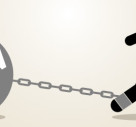Hey SEO Peeps – Quit the SPAM!

Everyone online hates spam. As a website owner, you want to ensure that your website is free from spammy content. That’s often harder than it sounds if you’ve hire dodgy SEO people – let’s look at why.
How to Avoid Looking Spammy
Dodgy SEO providers will often try to stuff your web pages with keywords in an attempt to rank higher for those phrases. This doesn’t work anymore. You should write for humans first and then work in a few keywords here and there without damaging the quality of the content. The quality of the content is the key. If it’s quality people will stick around on your website and the search engines will notice – the outcome is they will likely send more traffic your way.
Over-optimising your web pages for search engines, either by yourself, or through an inexperienced, unprofessional search engine optimisation provider is obvious spam. Avoid keyword stuffing, not only in the content, but also in the meta-data, alt-text and URLs.
Here’s a few basic tips:
- Write original content, or hire freelancers to write it for you. Rewriting or scraping content from other websites is a common spammers technique. Poor quality content always looks spammy because it’s repetitive, unclear and makes little sense.
- Don’t bombard visitors with ads and third-party links, especially to low-quality websites. Filling your website with ads and banners is a big no-no. When a page on your site has ads that take up much of the screen, the result is a spammy looking page, regardless of how good the content is.
- Using too many offers is something that should be avoid. Along with being a poor marketing strategy, it also will look cheap, nasty and overwhelming for visitors.
- Use web design services to customise your website so it looks professional.
- Don’t get spammy backlinks from questionable websites. Backlinks are links from another website to yours. They are used in an attempt to rank higher in search engines. Backlinks are only worthwhile if they are from great quality websites that related to what you do. The backlinks need to be earnt!
Duplicate Content Spam
A number of years ago now, duplicate content became a huge topic of discussion in the SEO world. Still, there are many SEO companies breaking these basic rules. Most of us with a website understand content is what drives traffic to websites so many have tried to cheat the system by copying content or adding the same content to multiple sites in order to create more backlinks to their websites. To avoid this, Google and other search engines changed the way they rank content, not giving credit to duplicate content and even in some cases, downgrading sites that have used these tactics. Hence, it is always best to keep an article or a page on your website unique and different from any other content online.
Duplicate content, often synonymous to spam, or content stealing, is generally defined as substantive blocks of text that are copied from one site to another. Some webmasters once tried to use duplicated content in an attempt to manipulate and influence search engine rankings. Think like a human not a robot when you create your content and you can’t go too far wrong. Keep you website growing by adding content often and removing or archiving your unproductive pages. Search engines like large, content-rich websites but the most important thing is content that interests your target market.
Kinds of Duplicate Content
1. Internal or on-site duplicate content, though not as bad as external, can be irritating. This refers to copies of very similar pages on your website that are all indexed and linked. Often websites will have short introductions where you can click to read the full article; this is a legitimate use of duplicate content. When the intention is to trick Search Engines to send you more traffic, that’s when you should start to worry.
2. External duplicate content is content on other websites that is the same or very similar to yours. Affiliate sites are often good examples of external duplicate content. Affiliates are third parties that resell products or services for a main site. They tend to have identical content as the main site and are therefore especially vulnerable to the duplicate content filter. E-commerce sites with descriptions used by other e-commerce stores are also considered as duplicate content. If you have a site like this you are always better off creating your own content and product reviews if you want to rank well in search engines.
3. Article banks are set up as online directories where you can publish content that anyone can republish on their own websites. This was once an attractive way of building backlinks, because each article you submit would link back to your own website. This practice is no longer effective due to the duplicate content filter. Google tries to seek out the version of content they consider the ‘best’ and index that page, ignoring the others. If you write great content, then publish it on your own site so you get all the credit.
Although filtered pages due to duplicate content do not get high traffic priority, it can still be useful to the site visitors providing it is valuable and interesting to the website readers. Ask yourself, how the content benefits your readers. The duplicate content filter was not designed as a site killer. However, there has to be a balance of controlling the least ranked pages and the use of duplicate content pages. Well done Google (and others) for building a search engines that helps actual content writers (like us).






